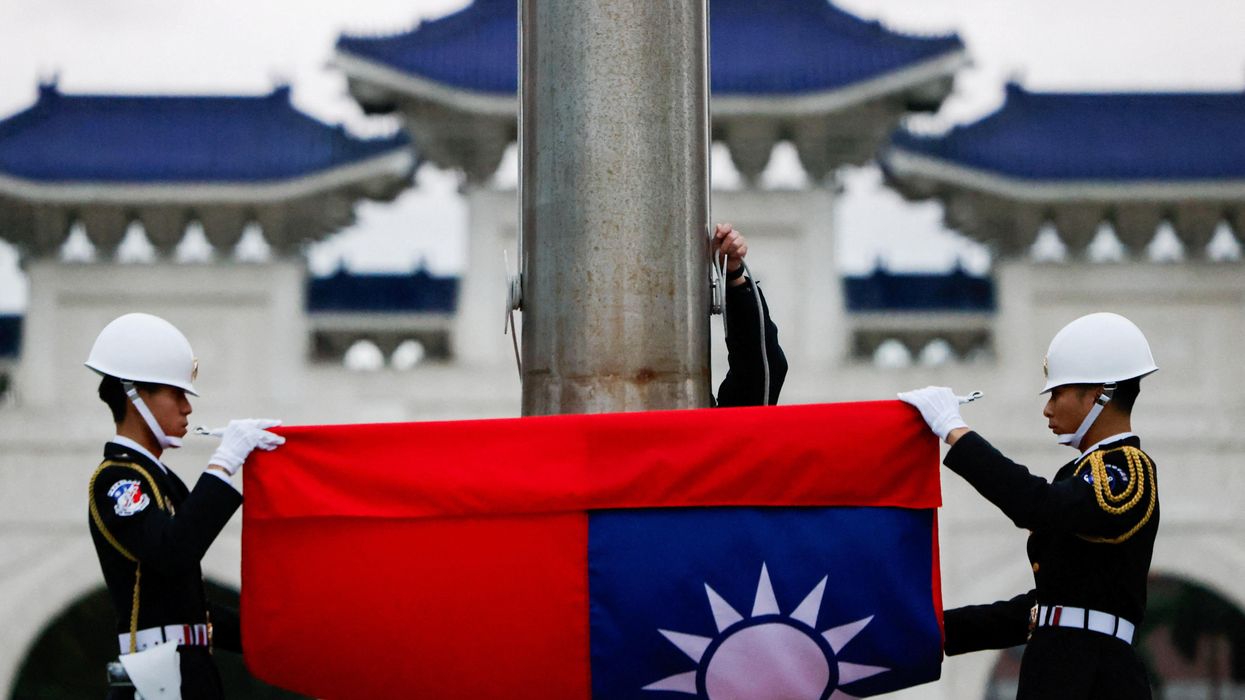The Michigan National Guard (MNG) is seeking to double the size of Camp Grayling, the largest National Guard base in the country, to accommodate for its expanded role in training the U.S. military in “all-domain warfighting.” But its plans are drawing widespread opposition right here at home, where its consequences would be most severe.
Since the MNG sent its proposal to the Michigan Department of National Resources (DNR) in June 2022, residents of Northern Michigan have been awaiting a final decision. If the state approves the expansion, it will be granting the MNG a 20-year lease to use 162,000 acres of public land for “drone operation, cyber, electronic warfare, space and communication system installation and operation.”
A growing chorus of townships neighboring the base and conservation groups have raised concerns about increasing military activities in their community. According to data by the conservation group Au Sable River Property Owners Association, more than 50 local governments neighboring the base have passed resolutions against the expansion. The group’s website lists reasons for opposition including risk of pollution, disruption of recreation, and economic challenges such as infrastructure degradation and decrease in tourism.
The Michigan Sierra Club published a letter which shares many of these concerns. Conservation Chair of the Sierra Club Michigan Chapter, Fred Miller, explained the Sierra Club’s concerns.
“The Sierra Club has insisted that any new use of public land should be limited to a clear necessity, and should be balanced by the return of similar land to public use and a strong commitment and plan to maintain natural ecosystems,” Miller told RS. “The expansion plan met none of these criteria. Furthermore, it came on the heels of PFAS pollution from the same base that has impacted lakes and streams in the area, and many reports that current trainings in forests now available to the base have resulted in ecosystem damage from hazardous wire and other materials left behind, with little attention to protecting the land and wildlife and little oversight.”
The National Guard’s Expansion Over Centuries
According to Michigan National Guard State and Public Affairs Officer, Capt. Andrew Layton, Camp Grayling is in a unique position to hold training for all-domain warfare.
“Camp Grayling is part of the National All-Domain Warfighting Center, which is one of the only locations in the Department of Defense that has the existing infrastructure to allow training in any seasonal condition in each of the five domains of warfare: air, sea, land, space and cyberspace,” Layton told RS. “As such, there is no other location where this type of training could be accomplished with the same value for training audiences and taxpayers.”
Layton’s comments raise a question, why is an institution largely under state control being used for all-domain warfare? The answer is tied to the expansion of the National Guard’s activities in the centuries since it was founded.
The National Guard traces its origin to 1636 when the Massachusetts Bay Colony created militia regiments. Throughout the founding of the United States, more of these militias were formed. With the passage of the Dick Act in 1903, the various state militias were formally organized as a National Guard which would receive federal support and be subjected to more federal control. Even as the Guard developed as a more organized reserve force with state and federal responsibilities, its missions remained largely domestic up until the start of the 21st century. Like much of U.S. national security policy, the use of the National Guard greatly expanded during the “War on Terror.”
Since 9/11 more than one million Guardsmen were deployed overseas, many of them having been deployed multiple times. Nearly half of all U.S. troops sent to Iraq and Afghanistan from 2001 to 2021 were from the National Guard and reserves, and Guardsmen made up 18.4 percent of the casualties in these wars. The MNG is no exception. In 2022 alone the Michigan Air National Guard was deployed on 88 missions worldwide, spanning 10 different countries, and the Michigan Army National Guard was deployed on two different missions in the Middle East.
A Michigan Base Focused On Great Powers
Along with training Michigan Guardsmen for great power competition by seeking thousands more acres to practice all domain warfare, Camp Grayling is a hub for training other states’ reserve forces, active duty personnel, and foreign militaries.
In 2022 alone, Camp Grayling trained 10,094 active duty personnel from the Army, Air Force, Navy, and Marines, as well as 157,640 reserve components. Those trained came from 29 different states and from other countries including the United Kingdom, Canada, Germany, Latvia, Lithuania, Liberia, and the Netherlands. On February 23, The Wall Street Journal reported that Camp Grayling was training a contingent of the Taiwanese military with a focus on China.
Layton said that these international deployments necessitate an increase in equipment and training.
“As we speak, more than 1,000 Michigan National Guard Airmen and Soldiers are presently deployed and away from their families,” he told RS. “These are sons, daughters, friends and neighbors who are potentially in harm’s way. The profession of service comes with an obligation to prepare our men and women for the most complex environment they might ever have to face with the right equipment and training.”
Even in the twilight of the “War on Terror,” the National Guard continues to be integrated in U.S. war plans. A report on the National Guard’s activities in 2022 highlighted the force’s role in supplying weapons to Ukraine and training Ukrainian soldiers in Germany.
The MNG’s proposed expansion of Camp Grayling is in line with a national security strategy centered around “geopolitical competition between the major powers.” Sen. Gary Peters (D-Mich.) even wrote in support of the expansion so that Michigan can boost the U.S. military’s Arctic readiness and “maintain a strategic edge against competitors such as the Chinese and Russian governments.”
***
Meanwhile, Miller said the MNG has been largely unresponsive to the concerns that the Northern Michigan community has raised.
“We do not know the equipment that might be used, the vehicles and aircraft that would be part of maneuvers or the numbers of participants in the expansion area,” Miller told RS. “We have no specifics on what steps would be taken by the National Guard or the DNR to better police the use and abuse of lands by the Guard maneuvers. The people in the area and throughout the state who have voiced concerns have only received the vaguest reassurances and promises, and little to no answers to specific questions.”
The DNR has not made a final decision on the expansion, but the department’s interim director recently announced that they are working with the MNG to “winnow” the proposal. Many of the communities neighboring the base have begun organizing around the slogans, “Not one more acre” and “no compromise,” and may see even a smaller-scale expansion as too large of a concession. So long as great power competition remains the focus of U.S. national security, such expansions will likely remain on the agenda.
















